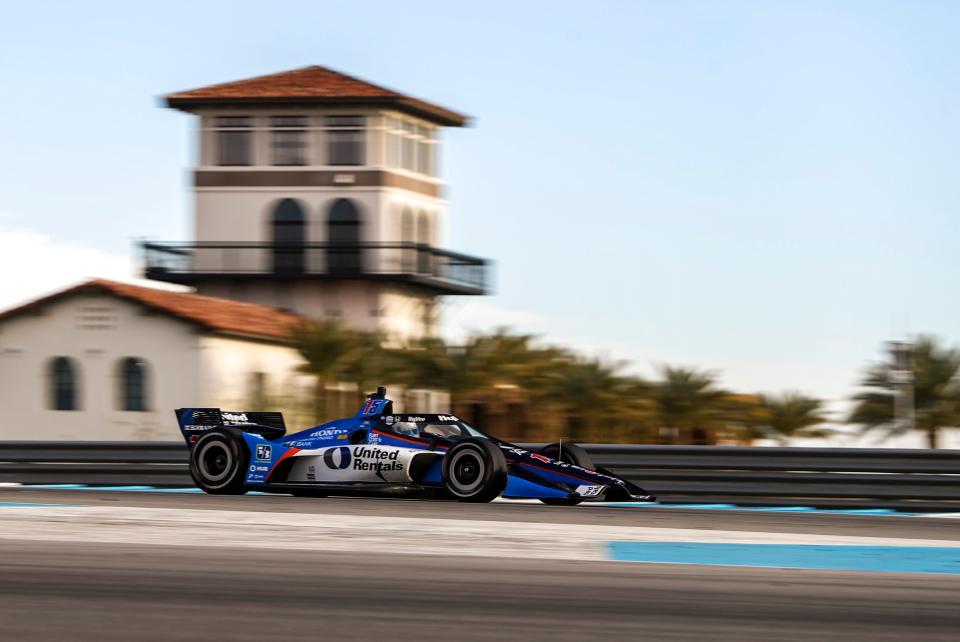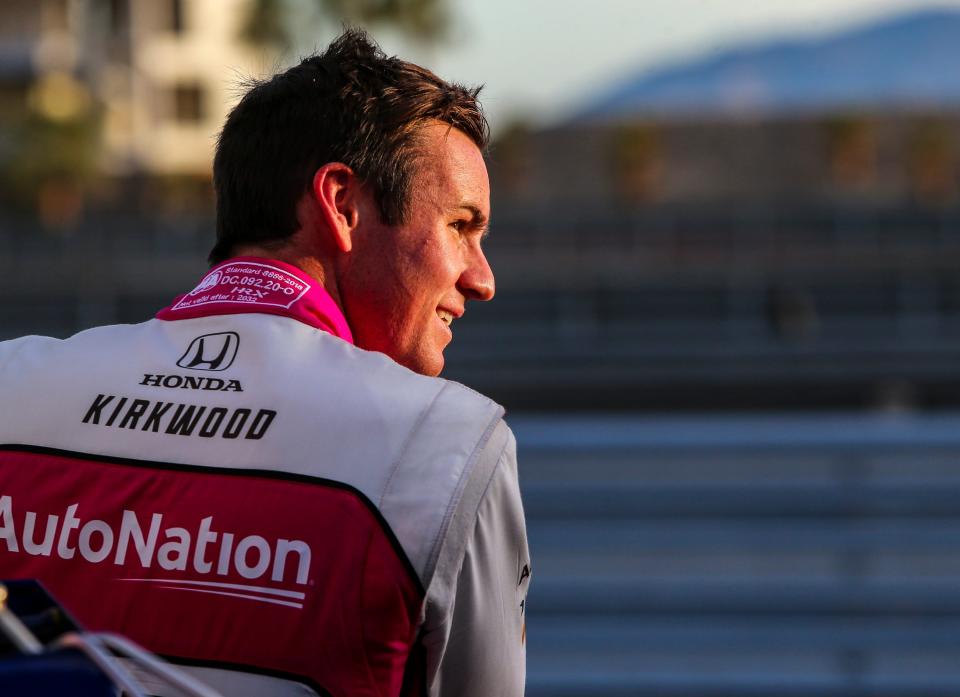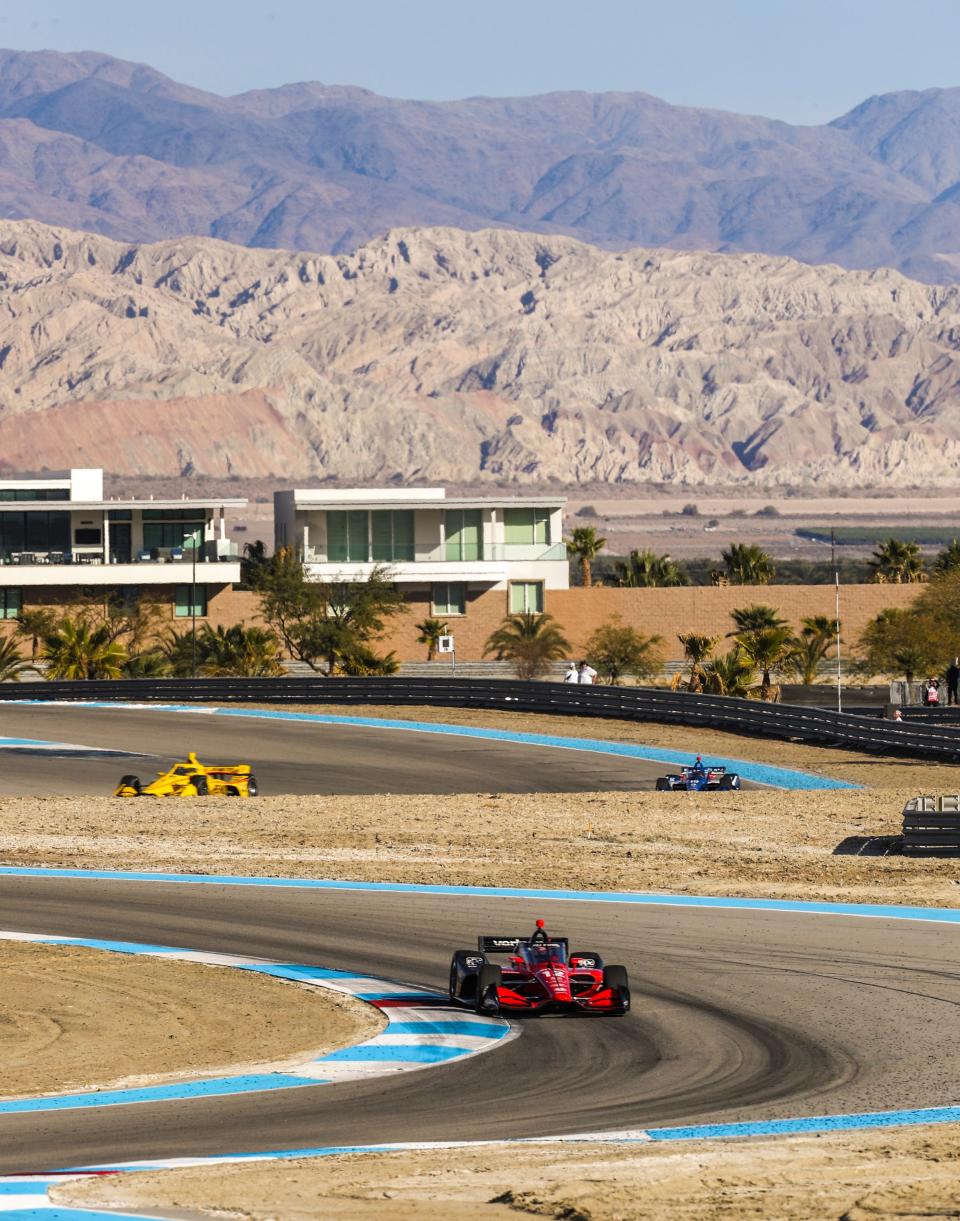Insider: IndyCar needs success with $1 Million Challenge. It's far from guaranteed.
At a time where sporting event are increasingly viewed through an entertainment lens – as golfers duel in pay-per-view matches and pro football players compete in flag football – IndyCar is trying something new in southern California.
It’s a level of ingenuity the sport has long needed. But after a run of setbacks in numerous forward-thinking efforts – its video game, its Nashville finale and its hybrid rollout to name a few – IndyCar and Penske Entertainment are sorely, sorely in need of a win at the $1 Million Challenge at The Thermal Club.

'I think people want to see us innovate'
Sunday’s All-Star-style, non-points event was born, in part, because of the availability of a network NBC TV window and a gaping hole left by the loss of Texas Motor Speedway from IndyCar’s schedule. After the series provided almost uniformly positive reviews from IndyCar’s preseason test at the venue in February of last year, visions of doing something more – importantly: bigger – was soon the focus for its return.
“We had an opportunity on the calendar in the spring, and Thermal had the kind of climate that seemed like it could work,” Penske Entertainment Corp. president and CEO Mark Miles told reporters this week. “I think people want to see us innovate. To do it in this way, without the points on the line, to us made sense. We’re excited to see what comes of it.”
But like is far too often the case for IndyCar's projects of late, getting to the start line has been anything but smooth. The event’s initial announcement revealed that members of The Thermal Club – the ultra-exclusive gated community where members pay upwards of $5 million to join and then build a swanky hideaway – would help fund a more than $3 million purse. Club member and Indianapolis 500 co-entrant Don Cusick explained to reporters this week that those members were expected to run their own separate race in identical BMW M2s. After being randomly paired with an IndyCar driver, their combined results would’ve decide the weekend’s winner.
That winning tandem would’ve then split $1 million – hence the event's name.
Answers to your questions: Here's how IndyCar's $1 Million Challenge will work

But IndyCar jumped the gun. As Cusick explained Tuesday, members became increasingly concerned that there were too few M2s available to race and too few amateur drivers comfortable competing under those circumstances – including putting up a six-figure buy-in.
In acknowledging the discrepancy in the event’s name and its grand prize, series officials have pointed out the total purse still vastly exceeds $1 million, though an official release incorrectly pitched Sunday’s $1 Million Challenge as having the largest total purse for a non-Indy 500 race in series history. CART’s 1996 U.S. 500 – held in fierce protest to that year’s 500 from Tony George and the Indy Racing League – paid out nearly double: $3.6 million vs. Sunday’s $1.756 million. And that winner – Chip Ganassi Racing and driver Jimmy Vasser – took home a true $1 million prize.
Even with an early ticket price of $2,000 that IndyCar claimed was meant to emphasize the uniqueness of the event (they were lowered to $500), the handful of gaffes around the $1 Million Challenge’s packaging and promotion can be talked through. Planned payouts for the teams remain unchanged when compared to September’s announcement – albeit with the public realization this week that the winning driver may only pocket roughly $100,000 for winning the ‘$1 Million Challenge.’ And lower ticket prices, officials said, came after local government officials allowed for increased fan attendance.

$1 Million Challenge: 'Great racing' or 'uneventful'?
The bulk of the paddock’s privately held tepid views of the event rests on it taking place at a track where drivers had two somewhat uniform takeaways after testing a year ago: passing was tough and the pavement roughed up tires like a cheese grater. How those traits will gel with a car that’s gotten lighter (lacking the hybrid system that was supposed to have already debuted), while Firestone tire compounds were made more durable to counterbalance the planned weight gain, is unclear.
In a pre-event release this week, Firestone clarified that the tires it’s bringing to Thermal, Calif., this weekend are the same compound and construction as last year’s open test, hinting that the lower level of tire deg teams experienced at St. Pete due to the hybrid delay may not carry over. According to series president Jay Frye, the event’s makeup – a pair of 10-lap heat races each with half the field, followed by a 12-driver shootout over 20 laps, all with no pitstops – is meant to allow teams to run all-out without tire concerns.
And, Frye added, a field full of “some of the greatest racecar drivers in the world” will surely find a way to pass with any level of money on the line.
Whether that actually plays out on Sunday remains to be seen.
A smaller than expected payday: Here's how much the $1 Million Challenge winner will actually make
“It’s funny. Sometimes we anticipate what we think is actually going to happen, and the complete opposite happens from that," Frye told reporters Tuesday. “We’re going to give them every opportunity and every tool at their disposal to create some great racing.”
Those tools include 40 seconds of push to pass for Saturday evening’s qualifying runs – which set Sunday morning’s heat race grids – as well as the drivers’ respective heats. The top-6 from each heat that advance to the 20-lap main event will then have 40 seconds of boost during each of the 10-lap halves of the race, split by a 10-minute halftime period where teams can make minor adjustments and refuel, but cannot change tires.
“We wanted it to be a no-holds-barred race,” Frye continued. “There will be no fuel-saving. It should create a great racing environment. (I think) the last 10 laps will be pretty interesting, (cars) full of fuel with 10-lap-old tires on and 40 seconds more of push-to-pass.”

Privately, one team owner told IndyStar that they fear an “uneventful” format, hampered by a track where it’s tough to pass and few laps in which to do so. What’s left could leave drivers deciding how to weigh the risk of crash damage in a weekend without points and only a few finishing positions with meaningful payouts, while 6th through 27th are all be paid the same ($23,000).
The real race, that team owner hypothesized, will be to finish in the top 3 in one’s heat race, to ensure a top 6 starting spot. “My opinion: If you don’t qualify in the top 6, there isn’t much of a reason to go race hard because it will be difficult to get to the (big) money,” they said. “Like a lot of things, I think they’re optimistic more is going to happen out of it than reality, but we shall see.”
Asked for his thoughts on the event during a small-group sit-down with select reporters the Friday of the St. Pete weekend, Michael Andretti notably huffed, and then gathered his thoughts.
“I understand why they did it. They had nowhere else to go, and they had a TV window, and they had to try and figure something out to fix it, but I think it’s a one-off thing,” Andretti said. “It’s an experiment, right? And hey, what if it works? Maybe not everything will work, but maybe there’s one or two things where we’re like, ‘Oh, this is really cool.’ Maybe you start to think about ways to implement (something new) for race weekends. I think this is a good time to try stuff.”
But, Andretti was asked, having just laid into rising series costs and a perceived lack of willingness of IndyCar's owners to invest in the sport’s long-term future, aren’t you annoyed about ‘trying stuff’ costing you money?
“Tell me about it.”
'I would love to race here': Takeaways from IndyCar's open test at The Thermal Club
IndyCar looking for a spark
When asked this week how he and series leaders would grade the event’s success, Miles offered up few metrics with which to grade the experiment on, saying simply, “We’ll just take everybody’s temperature after the fact.” Perhaps it’s because, like the event itself, it’s impossible to know what to think, or what to expect, or what to hope for until Sunday’s extravaganza is in the past. Public sentiments will be hard to mask.
Sunday, when the greater sports-loving population across the country will be embarking on its fourth-consecutive-day of ‘round-the-clock college basketball, IndyCar and NBC may have a morning (or midday) treat available for those looking for a change of pace.
But the sport needs something -- and fast -- after a season-opener that averaged less than 1 million viewers, according to the Sports Business Journal, and where the polesitter ran away from the field. In fact, IndyCar fans will have to go back five races – and six months of offseason – to find a race where the victor won by fewer than five seconds (Aug. 12, Gallagher Grand Prix on the IMS road course). For a series that boasts of its tight, competitive racing, it’s had just four finishes decided by 3.3 seconds or less since the start of last June.
Starring at another four-week break before Long Beach, in the midst of tense media rights negotiations and with members of the 0.1% watching in-person from their balconies on Sunday, IndyCar better hope it has put together a perfect storm. Its own Detroit Grand Prix in June – similarly cautioned by drivers and teams as a disaster-in-waiting – proved there can be more than meets the eye from premature prognosticators.
Inside The Thermal Club: What a $5.2 million membership gets you
But such a result is neither easy, nor has it exactly been IndyCar’s M.O. of late.
“What makes this, I think, different and unique and exciting, is big money on the line, and no points can be lost,” said NBC booth member and retired IndyCar driver Townsend Bell. “Having no points to win means no points to lose, and I’m not sure in the current era we’ve ever seen what happens in that format. That’s the curiosity, I think, for all of us.
“None of us, as we sit here right now, can tell you with any certainty exactly how this will play out, but I also think that’s the reason that so many are curious to watch. You dangle cold, hard cash in front of just about anybody in a competitive environment, and I think we’re going to see some interesting dynamics play out.”
This article originally appeared on Indianapolis Star: IndyCar banking on successful $1 Million Challenge, some are skeptical

